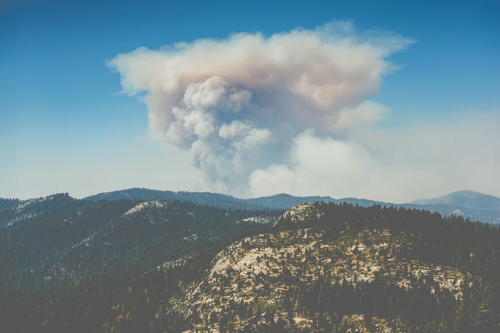Vast Siberian Wildfires Are Sending Huge Clouds of Smoke to North America
Aristos Georgiou
Severe wildfires are burning across an area about the size of Massachusetts in the vast Russian region of Siberia – and now the resulting smoke is arriving in North America, according to satellite imagery.
A photo taken on July 30 by the Suomi NPP satellite – jointly operated by NASA and the National Oceanic and Atmospheric Administration (NOAA) – shows numerous actively burning fires (red points) across Siberia and the extent of the smoke produced.
“The smoke looks to be arriving late tonight, but definitely by July 31, 2019,” Colin Seftor, atmospheric scientist at NASA’s Goddard Space Flight Center in Greenbelt, Maryland, said in a statement.
Smoke from wildfires such as these consists of tiny microscopic particles – known as particulate matter – and gases, such as carbon monoxide and carbon dioxide. The longer you are exposed to this smoke, the higher your risk of developing certain illnesses. However, the further away you are from the source, the more diluted it becomes, lessening this risk.
“Short-term exposures to intense smoke can lead to lung and cardiovascular problems in some people, especially if they are already susceptible to these diseases,” Richard Peltier, a professor of environmental health science at the University of Massachusetts Amherst, wrote for The Conversation. “Longer-term exposure over a few days or weeks increases the risk and the chance of health impacts as your cumulative dose increases.”

Summer wildfires in Siberia are relatively common, however, the situation this year is particularly bad with around 2.7 million hectares currently burning across six Russian regions, according to the country’s Federal Forest Agency.
The government has declared a state emergency in five of these regions in response to the fires, which experts say have been fueled by a mix of record-high temperatures in some areas, lightning storms and strong winds, the Financial Times reported.
The government has been slow to respond to the fires, saying they won’t try and fight them because they are in “hard-to-reach” areas away from urban populations, The Moscow Times reported.
“This is a common natural phenomenon, to fight with it is meaningless, and indeed sometimes, perhaps even harmful,” Alexander Uss, governor of the Krasnoyarsk region, said on Monday, the FT reported.
No settlements are currently on fire and there have been no fatalities so far. Smoke has reached Novosibirsk, Russia’s third-largest city – in addition to other large urban centers – and the Arctic Circle.
This is a worry, environmental campaigners say, because the smoke – as well as the huge losses of forest, which absorb carbon from the atmosphere – could contribute to further temperature increases in the region, posing a risk to permafrost.
In addition to the wildfires, some parts of Siberia have also been hit by severe flooding in recent weeks which has put the world’s oldest and deepest lake at risk of “environmental catastrophe.”
Flooding has affected the town of Baikalsk – which lies on Lake Baikal’s banks – where a former Soviet pulp and paper mill is located.
While the mill was shut down in 2013, there are still 13 storage ponds which contain untreated toxic waste from the production process. Experts say there is a risk that the waste stored in these ponds could be washed by the flooding into the lake’s pristine waters, considered among the world’s clearest.








